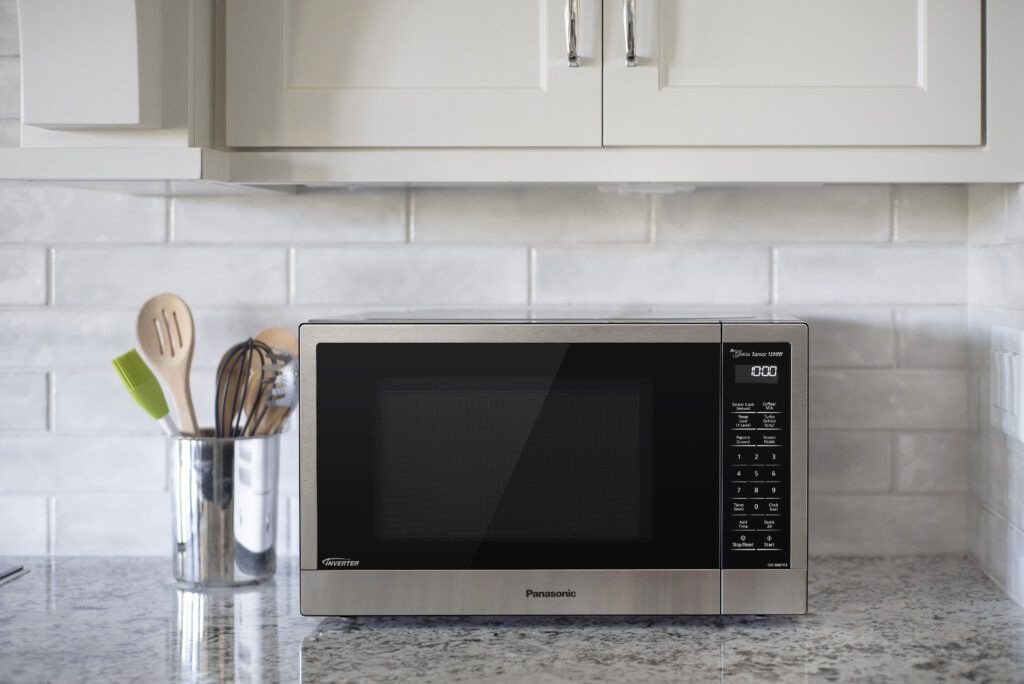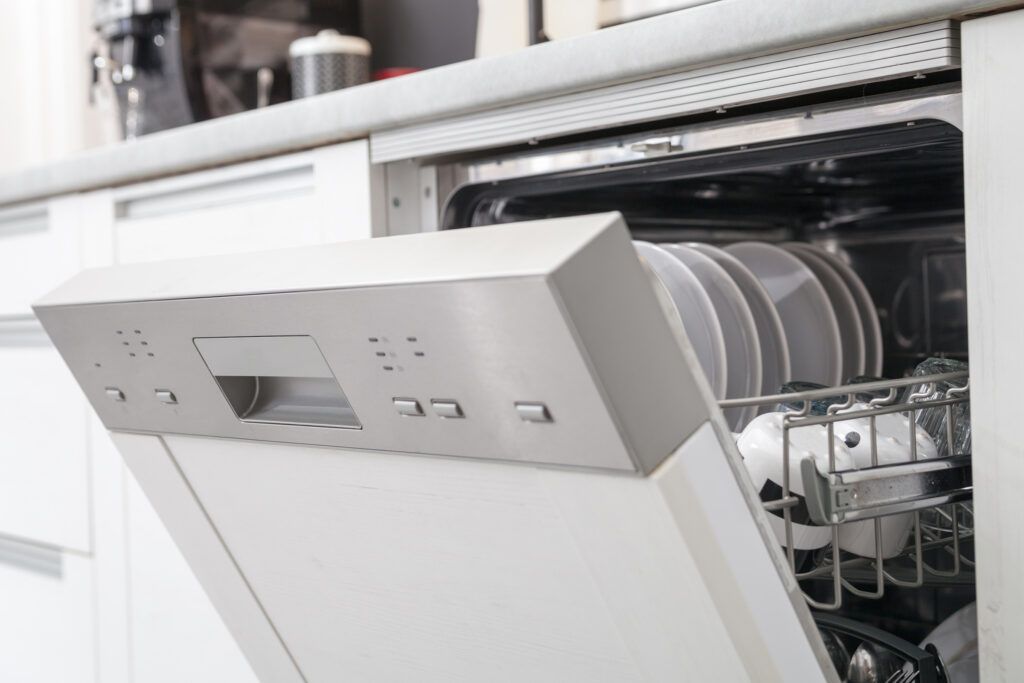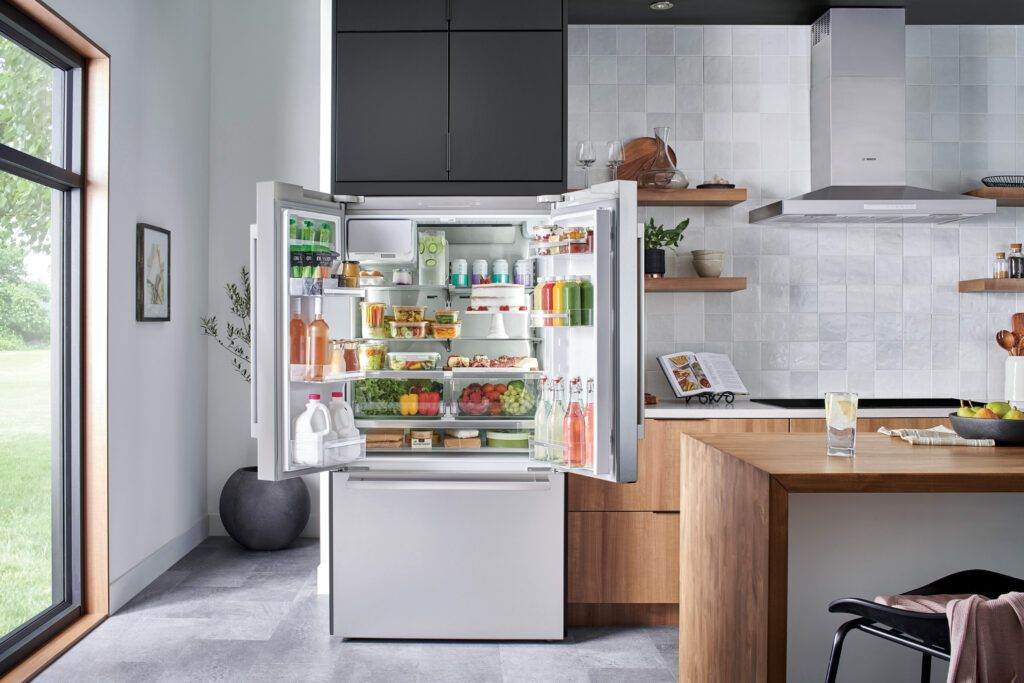From the kitchen to the laundry room, major appliances are the workhorses of our homes. They keep our food fresh, our dishes clean, and our clothes ready to wear. Whether you’re renovating your kitchen, replacing an appliance that’s reached the end of its life, or setting up a new home, choosing the right appliance matters. You want reliability, efficiency, and something that fits your home’s character. In this guide, we’ll walk you through the essentials of major appliances, sharing practical advice to help you make smart choices for your household needs.
Types of Major Appliances
While there are a variety of laundry room and kitchen appliances, major appliances typically refer to items such as:
Other major appliances include items such as wall ovens, trash compactors, range hoods, generators, and air conditioners. Small appliances include items such as coffee makers, air fryers, toaster ovens, blenders, bread makers, food dehydrators, wine coolers, and slow cookers.
How Much Do Major Appliances Cost?
The cost of a major appliance will vary drastically depending on the size, type, brand, and model. Here is a general estimate of what you can expect to spend on a major appliance.
Washer/Dryer
Washer-and-dryer sets will typically cost at least $1,500, with high-end models exceeding $2,000 or $3,000. Some budget models can be found for $1,200 or less.
Standalone washing machines can cost anywhere from $500 to over $3,000, depending on the make and model. Dryers typically cost around the same, but low-end models can be found for under $400.
In this video, Ask This Old House plumbing expert Richard Trethewey explains how to select laundry appliances, and how energy efficiency can impact how much you pat in the long run.
Dishwasher
The size of your dishwasher will largely determine the price it sells for. Smaller dishwashers can be found for $300 or less, but they will have fewer racks and less cleaning power. High-end dishwashers with extra racks and lots of additional features can cost over $2,000. Most models will fall somewhere within that range, with standard models often costing around $800–$1,000.
Refrigerators
High-quality refrigerators with features such as built-in icemakers, extra shelves, and smart features can cost well over $2,000 and even more than $3,000 for certain models.
Budget models with limited capacity can be found for around $500, while portable or mini fridges will be significantly less. Most standard fridges will cost somewhere in the $1,000–$2,000 range.
Microwaves
Microwaves vary significantly in price depending on their size and capacity. Small microwaves typically cost around $50–600, while medium-size microwaves cost anywhere from $150–500.
High-end microwaves with large capacity and extra features typically run between $300 and $1,000. For more information about microwave pricing, check out our microwave buying guide.

Most Trusted Brands for Major Appliances
Washer/Dryer
For washers and dyers, reliable brands include Whirlpool, LG, Samsung, Maytag, Insignia, GE, and Whirlpool. Aska, Electrolux, and Speed Queen are less well-known, but they also make high-quality products.
Dishwasher
There are dozens of reliable dishwasher brands, including GE, Frigidaire, Samsung, Bosch, Maytag, KitchenAid, BLACK+DECKER, and Whirlpool.

Refrigerators
Samsung, GE, Bosch, LG, and Whirlpool are some of the most trusted brands for refrigerators. Magic Chef, Galanz, Insignia, and Sub-Zero are also excellent options.
Microwave
There is a wide range of brands to choose from when buying a microwave.
Popular and well-established microwave brands include BLACK+DECKER, Electrolux, Hamilton Beach, Hotpoint, Bosch, Farberware, GE, LG, Magic Chef, Maytag, Samsung, Whirlpool, Frigidaire, and Panasonic.
The Best Places To Buy Major Appliances
Several reputable online retailers sell appliances from trusted brands and can deliver them straight to your home without the hassle of shopping in person. Some of the best places to shop for appliances include Amazon, Wayfair, Samsung, Best Buy, Target, and Macy’s, or you can shop from the brand’s website if you have a brand in mind.
Other Factors To Consider When Buying a Major Appliance
Space
When buying a major appliance, consider how much space you have in your home. You should always measure the space where you plan to put your appliance before purchasing and eliminate any models too large for that space.
If you live in a smaller home or apartment, for example, measure the space between your counters or the length of the wall before buying a new refrigerator. You should leave room (at least a few inches) on each side of the wall.
If you’re buying an over-the-range microwave, look closely at the height and width and ensure that it won’t knock into your kitchen cabinet or hang too low over the stovetop.
Weight
The weight of your appliance may also be a factor, especially if you’re considering self-installation. Larger appliances will be challenging to move or rearrange in your home. Lightweight models are more portable but will typically have less capacity and power.
Installation
After you purchase a major appliance, you’ll have to determine if you want to install it yourself or have a professional install it. While self-installation is more cost-effective, it can be challenging if you’re not experienced with installing large appliances.
If you were to pay for a professional to come and install it for you, the cost would vary based on the type of appliance and size of the model, but a basic installation may cost about $100–$300. Sometimes the store where you purchase the appliance may offer services such as delivery and installation, as well as hauling away the appliance, so ask about those services before you buy.
Features
Depending on what appliance you’re in the market for, here are some special features to look for that increase the product’s usability and overall effectiveness.
Dishwashers
- Adjustable rack, top rack, or third rack: Having adjustable or more rack space in your dishwasher gives you more flexibility on how many dishes you can fit or how you can configure your dirty dishes.
- Delay start: Dishwashers with a delayed start allow you to arrange the start of your dishwasher to ensure you’re not overusing the hot water in your home. For instance, you can use a delayed start to run after your washer is finished with a load.
- Energy Star certification for energy-efficient savings: Certain dishwashers have been labeled as ENERGY STAR certified, which means they can help save nearly 4,000 gallons of water during their lifetime compared to other models.
- Food pulverizers: Dishwashers that come with a food pulverizer use a chopper to disintegrate food particles so they don’t reappear on your dishes.
- Self-cleaning filters: Self-cleaning dishwashers clean the filter automatically during operation, reducing overall maintenance and dislodging trapped food particles.
- Smart-home integration and remote control: Dishwashers with Wi-Fi integration and smart home control allow you to manually control the dishwasher via a smartphone app so you can start and stop the appliance remotely, pause cycles, or create schedules.
- Soil sensor: Soil sensors automatically adjust how much energy is being used for each cycle depending on the soil load of the dishes, helping reduce overall energy use.
Washer/Dryers
- Automatic temperature control: If a washer features automatic temperature control, it can adjust the internal temperature during a wash to determine if cold or hot water is best for the particular cycle.
- Internal water heater: Internal water heaters draw hot water directly from the machine, rather than drawing in hot water from elsewhere in your home.
- Moisture sensors for custom dry time: Dryers that come with moisture sensors can automatically adjust a drying time to ensure it doesn’t finish until your clothes are completely dry.
- Self-cleaning: Washer/dryers with self-cleaning modes help reduce build-up and eliminate odors to help your clothes smelling gresh.
- Smart features: Like dishwashers, many washer/dryers come with Wi-Fi connectivity and other smart features that allow the cycles to be controlled remotely via your smartphone.
- Soil sensor: Automatic soil-sensing washers can automatically determine the level of stain on your clothes and adjust the cycle’s time and settings appropriately.
- Steam functions: Dryers with steam functions can help reduce or eliminate wrinkles in your clothes by using moist air to penetrate the fabric.
Refrigerators
- Air purification: Refrigerators with air purification can filter out airborne contaminants to reduce bacteria build-up and help keep out bad odors.
- Built-in ice maker: Refrigerators often come with built-in ice makers either in the freezer, or on the front panel. High-end fridges can sometimes make multiple types of ice, including crushed, cubed, or flakes.
- Built-in water dispenser: In addition to ice maker, some refrigerators have built-in water dispensers which can deliver purified, cold water simply by pressing a button on your refrigerator door.
- Digital controls: Many modern refrigerators come with digital touch control panels that allow you to adjust the internal temperature, adjust the fan speed, or increase or decrease cool air in various sections of the appliance.
- Smart features: Smart refrigerators can include various elements such as voice control, remote temperature adjustments, or even the ability to see the inside of your fridge from the outside. Some high-end smart fridges also include digital photo displays or speakers for playing music or taking phone calls.

Microwaves
- Automatic defrost: While most microwaves come with some sort of defrosting function, many also have specific functions for defrosting vegetables, meats, or poultry. Others automatically adjust the defrost time based on the weight of the food.
- Convection cooking: Convection microwaves use a heating element to spread heat evenly throughout the appliance, ensuring your food is fully heated and does not have cold spots.
- Racks: Some microwaves include extra racks, which allow you to heat more food at once or fit larger containers.
- Sensors: Like sensor control in other appliances, some microwaves can use sensor controls to automatically adjust the cooking time as food is heating, helping you avoid the frustration of needing to re-heat items that are not hot enough.
- Shortcut keys: Almost all microwaves include some variety of shortcut keys, which allow you to set cooking times automatically for certain food items or cooking types. Popular shortcut items including defrost, reheat, soften, popcorn, beverages, vegetables, pizza, and rice.
- Sound control: If you’re not able to open a microwave right after the cooking is complete, the constant beeping of the device reminding you about the cycle completion can be an annoyance. Some microwaves come with features that allow you to cycle this sound on and off, adjust its volume, or change how frequently it beeps.
Functionality
There’s nothing more frustrating than a major appliance that doesn’t work correctly. It can lead to headaches trying to figure out the issue or expensive repairs. Before buying an appliance, check to ensure it is well-reviewed and has no major red flags. Another major consideration is if it will work with your current home setup. For example, if your home doesn’t have a washer/dryer hookup, you may need to focus on portable washers.
Design/Style
While functionality and features are most important when it comes to appliances, that doesn’t mean you should ignore design. Most appliances come in black, white, stainless steel, or other dark colors. However, there are appliances available in brighter, novelty colors.
Many modern appliances also include fingerprint-resistant designs that help them maintain a sleek, fresh look no matter how often they’re used. Other design elements include handle or door finish color, configuration (such as a French-door refrigerator or top-load washer), and material.
Frequently Asked Questions About Major Appliances
Do I have enough room to fit a major appliance?
To ensure you have enough room to fit your appliance, check the product’s dimensions carefully before purchasing, and measure the space and counter depth where you plan on installing the appliance. It’s always wise to leave a few extra inches of space next to the wall for a refrigerator and washer/dryer. If you want to save space, consider models such as a countertop microwave, mini refrigerator, or portable washer/dryer.
What capacity appliance do I need?
To determine what capacity appliance works best for your needs, consider how often you plan on using the appliance and how large your household is. For example, a family of four that eats dinner at home every night is likely to require a large-capacity dishwasher, while a single person living in an apartment is likely looking for something more cost-effective that saves space. For something like a washer dryer, think about how much laundry you do and how large your household is. A family of four with a full laundry room may opt for something like a large-capacity washer-dryer set, while a single person living in a small apartment may instead want to look at washer-dryer combos that take up minimal space.
How much should I spend on a major appliance?
How much you should spend on a major appliance is up to you, and the range varies widely by type of appliance. It may be helpful to set a budget before you shop and look for models within that price range. Just because certain models are cheaper doesn’t mean they are less effective—they just may be lacking in size or extra features that high-end models have. Setting a budget and researching your options will help you save money and ensure you’re buying a great product.
How do I know if the brand I’m buying is reliable?
If you’re buying a major appliance from a brand listed above in this article, it’s likely to be well-made and last for years. However, if you’re buying from a lesser-known brand, take time to do your research and read professional and customer reviews to see what is being said about the brand and model. You should also look for products with extensive warranties to better protect yourself if the product doesn’t meet your standards.
What is the best warranty for high-end appliances?
If you’re looking for an additional warranty on your high-end appliances to protect you from wear and tear or breakage, there are several good options to choose from, such as Liberty Home Guard, American Home Shield, First American Home Warranty, and Select Home Warranty. You can find one that offers the coverage you need and fits your budget.
Can I install a major appliance myself?
Installing a new appliance is possible if you are handy and have the right tools available. However, if you want to leave the installation to the professionals, it is important to factor in installation costs when making a purchase.
Installing a dishwasher can be tricky. Watch the video below with This Old House plumbing contractor Richard Trethewey for step-by-step instructions on how to install a dishwasher:
If you have the proper hookup, front-loading washers and dryers are also relatively easy to install. Here is a video showing you how to install a front-loading washer and dryer:
If you’re installing an over-the-range microwave, you may need to install a hood for the exhaust. In this video, general contractor Tom Silva explains how to install a microwave hood with an exhaust fan in your kitchen:
When is the best time to buy a major appliance?
If you’re looking for a great deal on major appliances, Black Friday and Cyber Monday are great times of year to look for deals. However, if you look frequently, brands and retailers typically run promotions at various times of the year. You can also look for deals at the end of the month, right before manufacturers release new models.
Other Appliances To Consider
- Best Home Generators
- Best Range Hoods
- Best Trash Compactors
- Best Side-by-Side Refrigerators
- Best Built-In Microwave
- Best Induction Range
- Best Compact Washer-Dryer
To share feedback or ask a question about this article, send a note to our team at reviews@thisoldhousereviews.com
